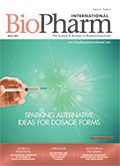Regulatory Considerations Associated with Alternative Dosage Forms
Jessica Rousset, chief operating officer, CURE Pharmaceutical, highlights some key regulatory considerations developers should keep in mind when approaching alternative dosage forms.
Excipients. Excipients used in alternative dosage forms should be carefully examined to avoid additional risk, approval delays and higher development costs. Indeed, one should determine whether the proposed excipients were previously approved for the proposed mode of administration, at what concentrations they have been used, and whether they have been approved for a drug product vs. a food product or cosmetic product. If an excipient is novel or used in a different manner, the regulators will require additional information to demonstrate safety.
Manufacturing. Manufacturing processes may differ significantly from those used for traditional dosage forms. Using custom equipment or having dosage form-specific critical quality product attributes and in-process controls may require using new technology for making measurements and the adaptation of standard testing protocols (e.g., dissolution testing).
Equivalence by design. If a 505(b)(2) pathway is pursued, demonstrating and evaluating therapeutic equivalence (typically the 80–125% confidence limit rule for area under the curve) with a branded drug can be accelerated by matching the in-vivo drug delivery profiles of the reference product throughout product development, which is particularly important for complex dosage forms. This can be achieved using an approach analogous to the quality-by-design (QbD) paradigm promoted by ICH and FDA (1).
Reference
1. M.-L. Chen, Pharm. Tech. 33 (10) 104–110 (2009).

Tokyo University of Science Research Team Explores Improved Delivery of Antisense Oligonucleotides
April 18th 2025Using cholesterol-modified oligonucleotides, the research team aims to improve the delivery of antisense nucleotide-based therapies for treating neurodegenerative diseases and brain cancers.
Teva and Samsung Bioepis Launch Biosimilar Eculizumab in US Market
April 17th 2025Eculizumab-aagh (EPYSQLI) is now available in the US to treat patients living with difficult-to-treat rare diseases such as paroxysmal nocturnal hemoglobinuria, atypical hemolytic uremic syndrome, and generalized myasthenia gravis.